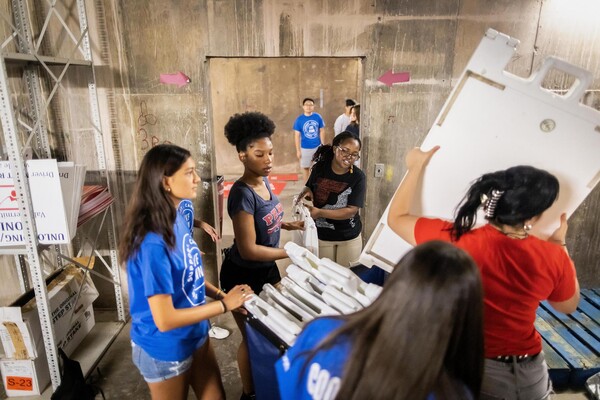Still Publishing Significant Scholarship
The best seller at the University of Pennsylvania Press is "Witchcraft in Europe," by Alan Kors and Ed Peters, which has sold 15,000 copies in 25 years.
"It's a perennial," says Eric Halpern, director of the Press, "It's heavily used in courses."
But the mission of university presses in general, and Penn's press in particular, is broader than printing academic bestsellers. It's to "advance the scholastic and educational aims of the University," Halpern says.
That's not to say that salability doesn't count. No profits, no press.
But significance counts, too. And it's the job of the university press of the '90s to balance the two.
That's because changes in the economics of running a university press have changed the way decisions are made about which books to publish, according to an article in the New York Times, Nov. 18th, and therefore
- have changed the publishing opportunities for academic scholars,
- have reduced research opportunities as some good but narrow-interest scholarship goes unpublished and therefore becomes inaccessible, and
- have put out of reach for many the hiring and tenure opportunities that require a publication track record.
Those changes have affected the University of Pennsylvania Press, too.
To minimize the changes, the Press has several strategies.
One strategy is economy of scale, but the only economies of scale in academic books written mainly for scholars are in marketing, Halpern says. "By narrowing disciplines, we can direct market in focused ways."
For example Italian studies is out. "We have trouble in Italian studies," Halpern says. "The scholars in the field aren't purchasing the books."
Penn, like other university presses, has moved away from publishing extremely narrow scholarship--books with sales potential below 1,000 copies in a three-year period.
"Our expectations are quite modest, yet many of our books don't even break the 1,000 copy threshold," Halpern says.
The causes for the changes in the economics of publishing lie with federal dollars and the explosion of information and scholarship coming out of the nation's schools. Twenty-five years ago, there were 60 members of the Association of University Presses with 2,300 titles per year and 370,000 professors in the nation. Today, there are 109 members of the Association of University Presses with 8,000 titles per year and 600,000 professors. The ratio of books to potential faculty purchasers has gone from one book per 181 faculty members to 1 book per 75 faculty members--or fewer faculty dollars available for each book published.
And cutbacks in government funding of university libraries means publishers can no longer count on breaking even on library sales, which in 1970 amounted to 1,000 or more per volume. Today, Penn counts on libraries to purchase about 250 copies of each volume, a dwindling fraction of what a publisher needs to break even.
"The crisis of the scholarly monograph also involves the other branches of the university," Halpern says. Without the balance between scholarship and publishing, scholars have problems. Libraries can not purchase books that are not published; young scholars can not get tenure-track jobs without publishing; and scholars of all ages can not do research in unpublished and undistributed work.
"There was a symbiotic relationship between academia, libraries and university presses," Halpern says. A hundred years ago, there was lower output, few university presses, all that was written was published, and libraries could afford the books. The balance is gone. "I don't know that the university world has come to grips with this problem."
The Press has come to grips with its own problem--surviving. Besides eliminating unprofitable fields with small constituencies in the University, the Press is adding profitable ones and ones with large constituencies here. Art and architecture make up a small but growing percentage of the list because they sell well. And Penn has added science and medicine to the list because so much of the University and culture are based on science and medicine, Halpern said.
Increasing the number of books aimed at general readers is another strategy. "University presses are becoming much more adept at trying to adapt what they put out for general readership," Halpern says. So Penn is publishing serious non-fiction for general readers, work that can be marketed to book stores.
For example, "Sculpture," by Philip Rawson, about the language of sculpture through history and around the world, and "The Literary Bent: In Search of High Art in Contemporary American Writing," by James D. Bloom, which considers the standards that separate literature from pulp fiction and other forms of contemporary writing, are both serious books that appeal to readers beyond academia and advance a discussion about an art form.
"The bookstore market book has to be somewhat more broadly couched," Halpern says. "Authors can't be merely writing for their specialized colleagues."
Which is not to say the Press is not publishing books aimed at those colleagues. How else to explain the books with potential sales as low as 1,000 copies?








